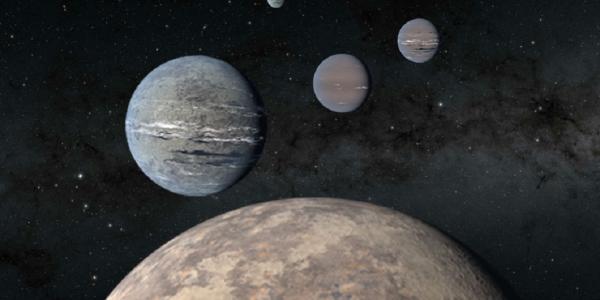Physics Colloquium with Tansu Daylan on Shining Light on Planet Formation
Planets are thought to form via core accretion of molecular gas and dust in circumstellar disks around protostars. Discovery and characterization of exoplanets can challenge, refine, and generalize our understanding of the dynamics and size distribution of pebbles and planetesimals. For example, existence of close-in Jupiters requires a migration mechanism either via angular momentum exchange with the protoplanetary disk or tidal circularization of eccentric orbits. Exoplanets with densities as low as ~0.1 g/cm^3 may be indications of dusty outflows or rings. The prevalence of super-Earths and sub-Neptunes in our Galaxy sharply contrasts with their absence in our planetary system and their curious bimodal radius distribution points to processes such as irradiation-driven inflation and atmospheric escape. To support these investigations, the Transiting Exoplanet Survey Satellite (TESS) has been surveying the sky for exoplanets amenable to accurate mass measurements. Modeling its time-series data by widely-used software such as allesfitter has enabled the characterization of rich multiplanetary systems. Observationally favorable discoveries such as TOI 1233 can enable the measurement of the carbon-to-oxygen ratio across the system, yielding a probe of chemical composition and relic frost line of volatile species. Furthermore, young (<100 Myr) exoplanetary systems can help distinguish atmospheric escape mechanisms such as core-powered mass loss and photoevaporation enabled by extreme space weather conditions. Finally, TESS phase curves and transmission spectra that will be obtained by the James Webb Space Telescope (JWST) can constrain the albedo and atmospheric composition as in the case of WASP-121b. In near future, we also expect to obtain a direct observational probe of exoplanetary materials by characterizing new interstellar objects like ʻOumuamua using the Legacy Survey of Space and Time (LSST). Overall, LSST, TESS extended missions, Gaia, and the Roman Telescope will probe the occurrence rate of exoplanets hosted by young, compact, and evolved stars; characterize the relation between their masses, radii, metallicities, and ages; and improve our demographic exploration of exomoons and exocomets. These efforts will significantly enhance our ability to contextualize our solar system and test models of planet formation and evolution.

